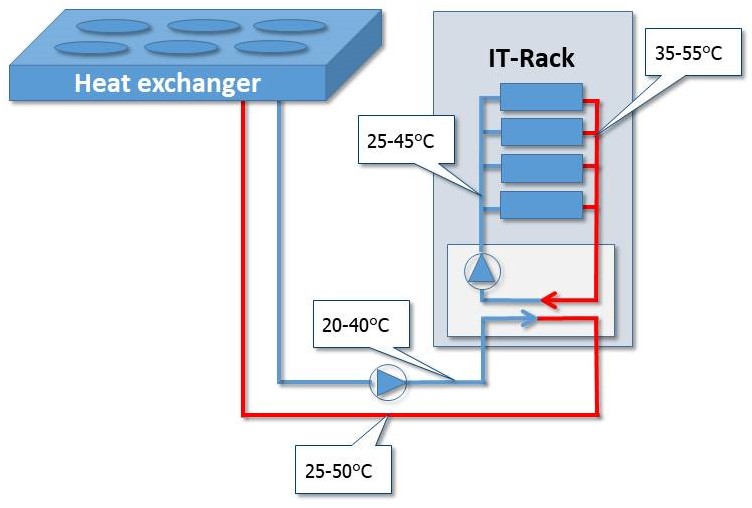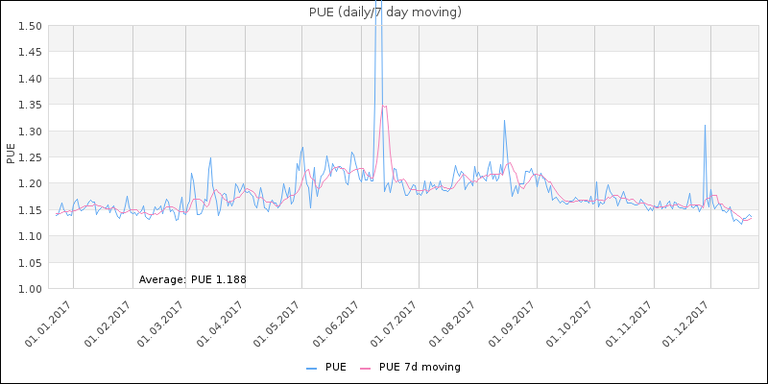29.01.2018
The first three years of operation of Mistral showed that despite an increase in computing performance by a factor of 20 and an increase in storage capacity by a factor of 10 compared to its predecessor, the energy consumption has not increased. Even more than 1 GWh of energy could be saved annually. Because of the large efficiency gains in computing technology, it is both environmentally and financially necessary to replace the high-performance computers every five years by a new one.
Substantial savings were achieved using the direct high-temperature liquid cooling, which cools 85% of the heat energy released by the computing nodes. Only 2% of additional energy is needed for cooling, since these systems use free cooling throughout the year and do not need additional cooling units. Older systems require typically more than 20%.

Figure 1: Direct high-temperature liquid cooling uses a mixture of glycol and water to remove heat directly from the compute nodes. The cooling fluid is then pumped onto the roof of the DKRZ building where it releases the heat to the outside air. This type of cooling is about ten times more efficient than conventional air cooling because of the high heat capacity of water. As a result, the use of energy-intensive cooling units can be greatly reduced in the latest generation of high-performance computers.
The value of PUE (Power Utilization Efficiency), indicating the energy efficiency of a computing center, is below 1.19 as an annual average for Mistral in 2017. This means that less than 19% of the energy is needed in addition to ensure the cooling of the computers and the energy supply.

Figure 2: Power Utilization Efficiency (PUE) during 2017 - The PUE is a measure of the energy efficiency of a computing center. The annual average value for the DKRZ is less than 1.19. This means that less than 19% of the energy is needed in addition to ensure the cooling of the computers and the energy supply. For the directly liquid-cooled compute nodes, only about 2% additional energy is needed for cooling, since these systems can be cooled during the whole year in free cooling without additional cooling units.
The DKRZ was able to save even more energy by operating an uninterruptible power supply (UPS) with an efficiency of 98.5%. Most of today’s systems deliver values below 95%.
To further increase energy efficiency, the computing center's waste heat will prospectively be used to heat laboratories in the neighboring building. As a result, up to 30% of the waste heat will be reused.
